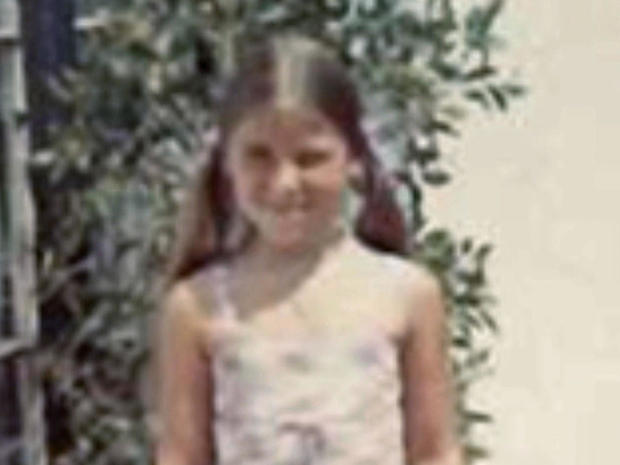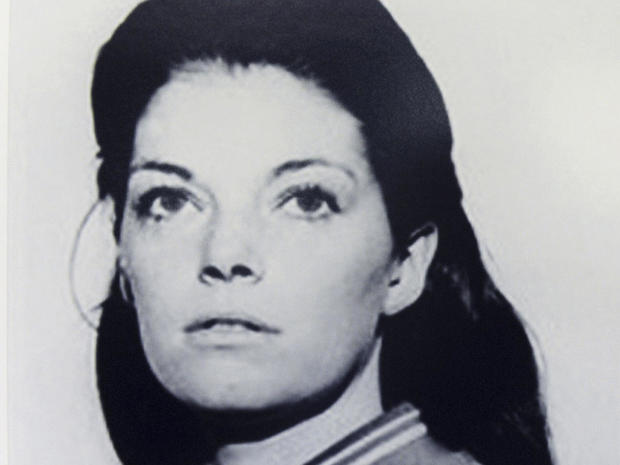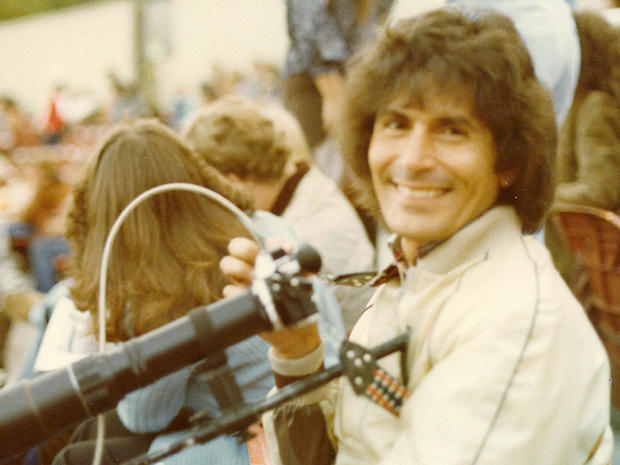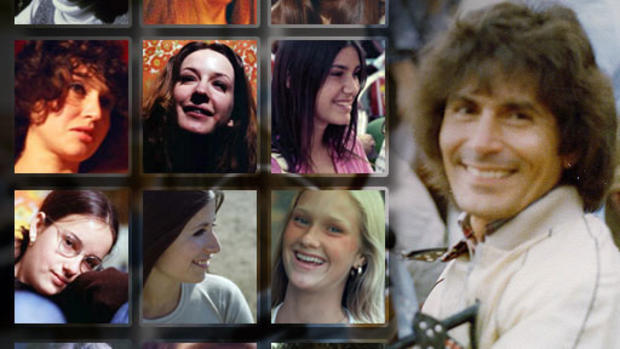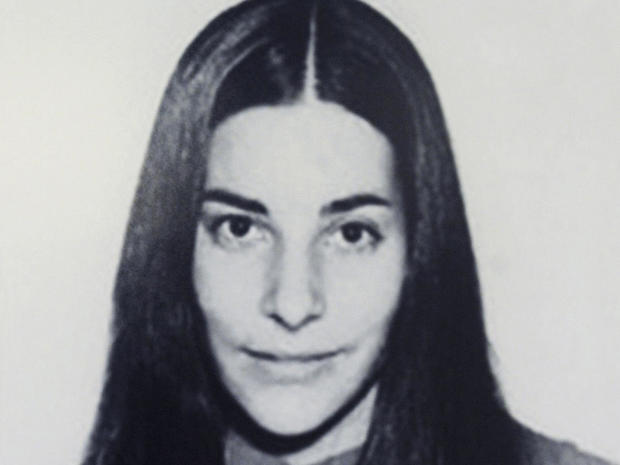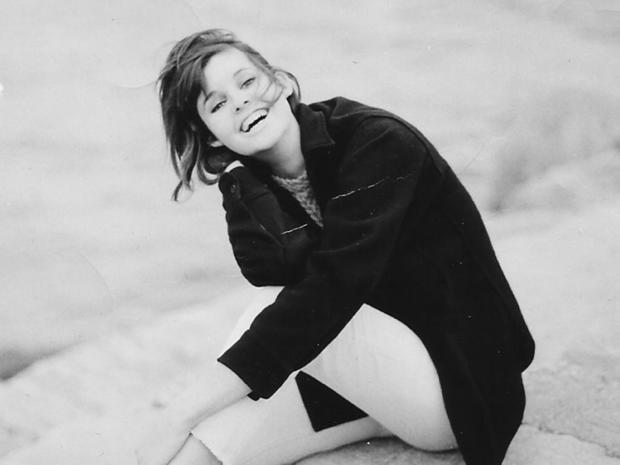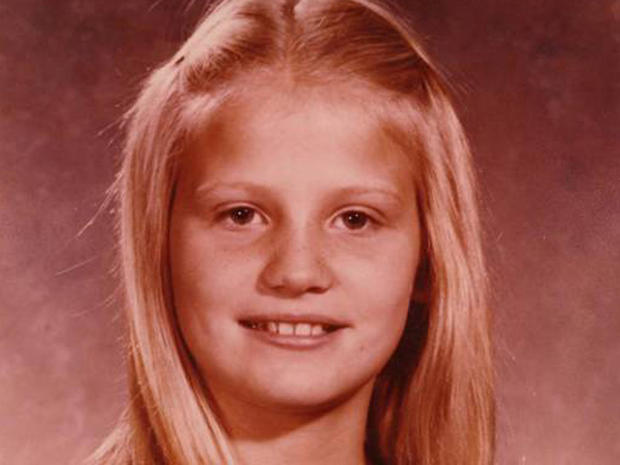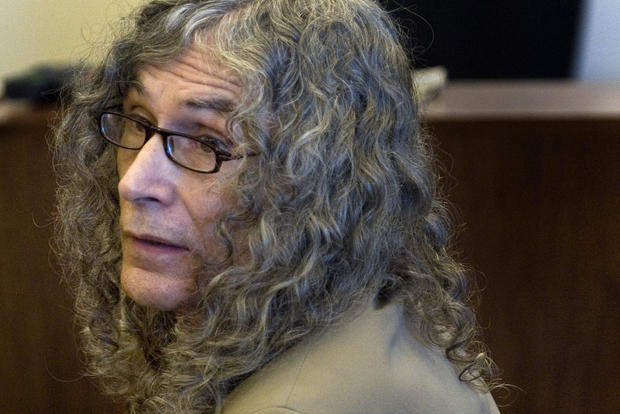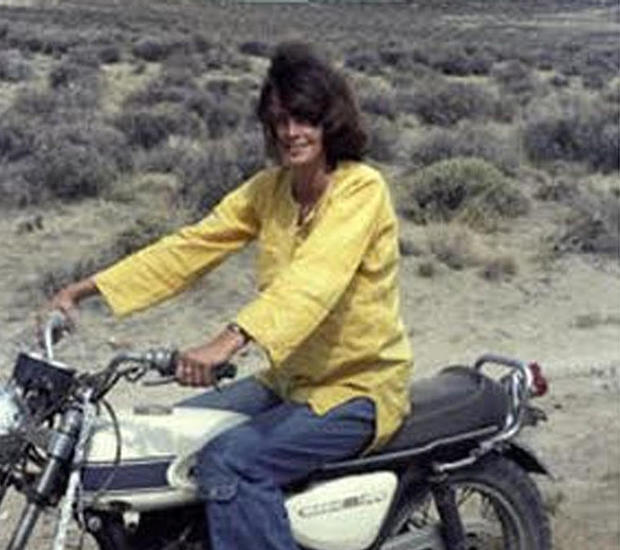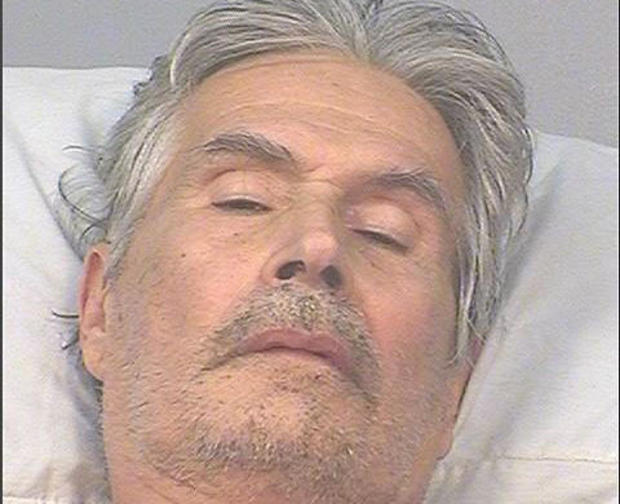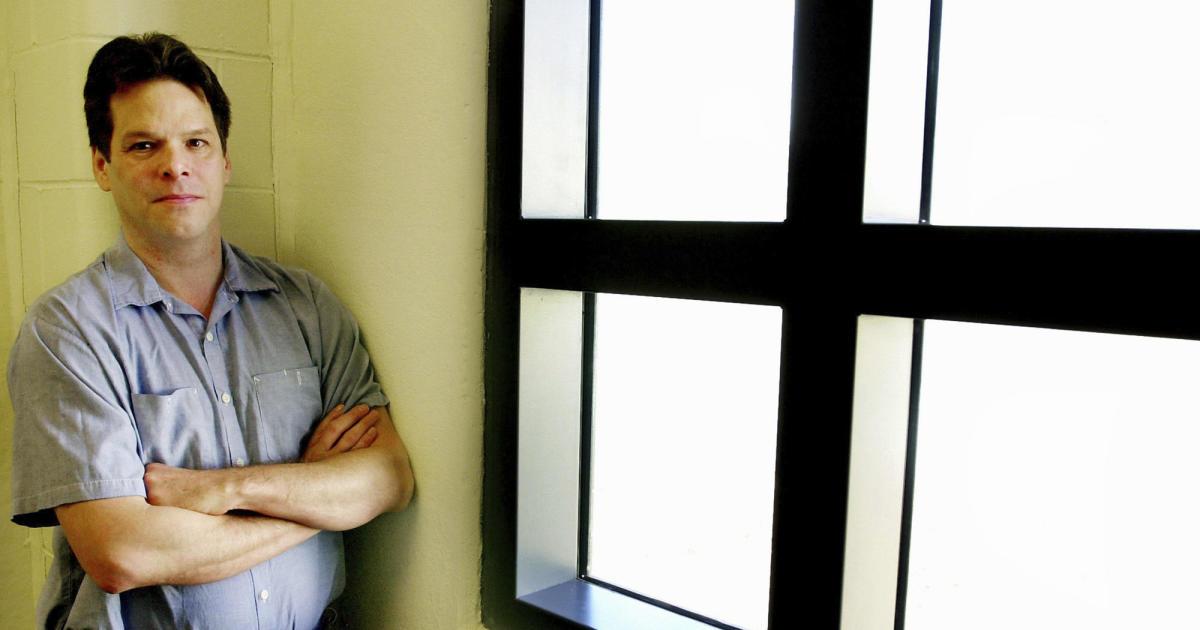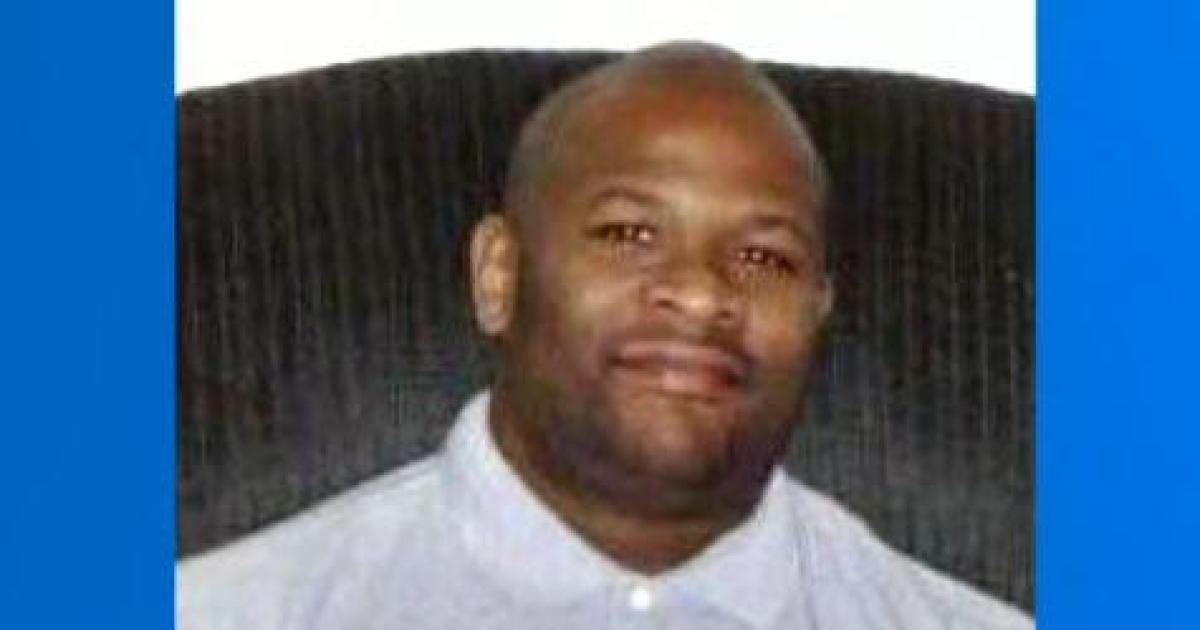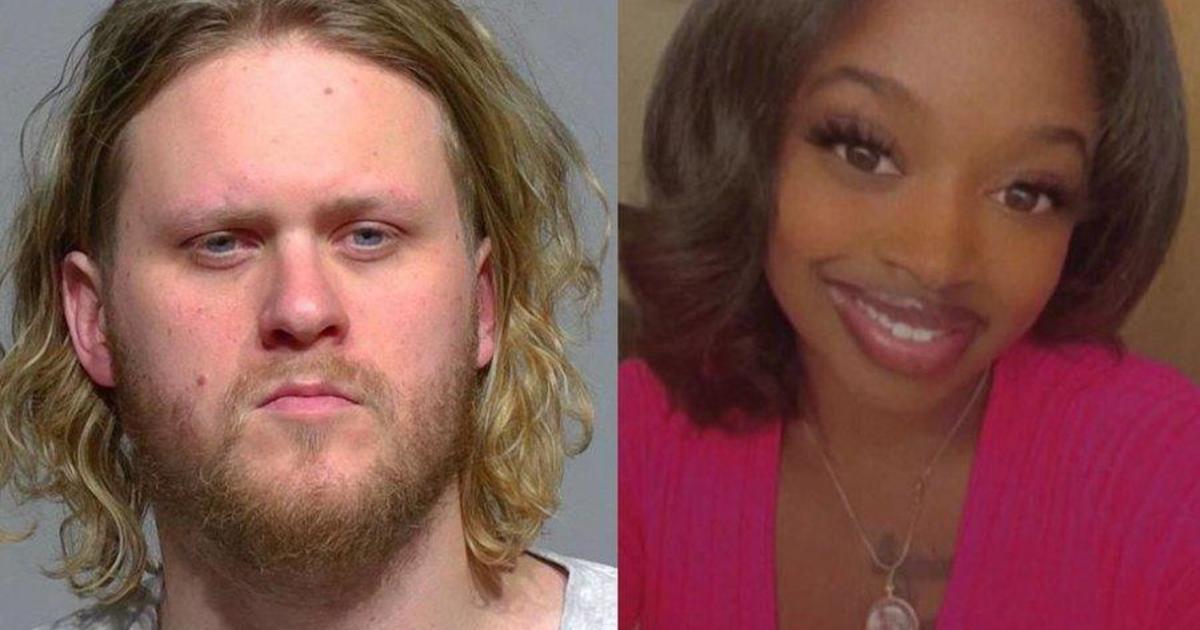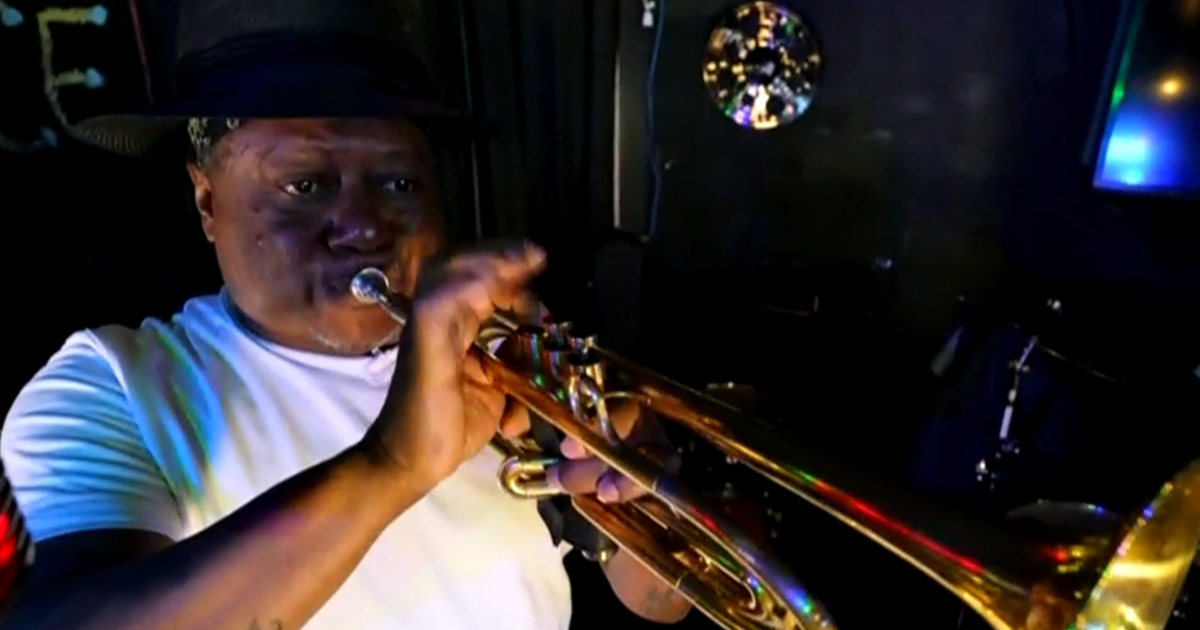Rodney Alcala: The Killing Game
Produced by Gayane Keshishyan Mendez and Tom Seligson
When "48 Hours" first investigated the case of Rodney Alcala, he had been convicted of the murder of five California women. But it wasn't over; he would be tied to other cold cases.
A series of photos that Alcala had taken and posted online by "48 Hours," would lead to one woman finally finding out what happened to her sister who had vanished almost 40 years ago. How many other cases are there?
In Los Angeles in 1968, 8-year-old Tali Shapiro was walking to school when a car pulled up alongside her.
Chris Camacho | Former detective, LAPD: I was out doing my patrols. We just started our shift that day. And I was driving down Sunset Boulevard. And I had received a call, a beige-colored car with no license plates following this little girl.
Steve Hodel | Former detective, LAPD: A Good Samaritan, a witness, sees the little girl, the little 8-year-old Tali get in the car. Thinks it's suspicious, follows him, and puts a call into LAPD.
Former Los Angeles Police Officer Chris Camacho reached the location and knocked on the door.
Chris Camacho: I said, "Police officer. Open the door. I need to talk to you." This male appeared at the door. I will always remember that face at that door, very evil face. And he says, "I'm – I'm in the shower. I got to get dressed." And I told him, "OK, you got 10 seconds." … Finally, I kicked the door in. The image will be with me forever. We could see in the kitchen that there was a body on the floor, lot of blood.
Matt Murphy | Orange County Deputy D.A.: They say a picture says a thousand words and that image of those little white Mary Janes on that floor with that metal bar that he used to strangle her with, and that puddle of blood, it just looks like too much blood to come out of a-- a tiny little 8-year-old like that.
Chris Camacho: There was no breathing. …We all thought she was dead.
Camacho began frantically searching the house for her attacker. Moments later, he walked back into the kitchen and witnessed a miracle.
Chris Camacho: She was gagging and trying to breathe, and I thought one for the good guys. She's going to make it.
Clinging to life, Tali was rushed to the hospital.
Matt Murphy: Had it not been for that police officer, Tali Shapiro would have died on Rodney Alcala's kitchen floor.
Chris Camacho: We started searching the residence. There was a lot of photograph equipment and all of us were amazed at the amount of photographs that he had there of young girls, very young girls. We found a lot of ID, picture ID of a Rodney Alcala. He was a student at UCLA.
The suspect, 25-year-old Rodney Alcala, had slipped through the officers' fingers.
Chris Camacho: When I kicked in the front door … the suspect went out the back door.
With Alcala in the wind, former Detective Steve Hodel was grasping at thin air.
Steve Hodel: We kept coming up empty. Back then, you know, we didn't have a lot of the forensics you have today.
Steve Hodel: He was a snake charmer. I went and talked to his professor at UCLA. … He says Rod Alcala wouldn't hurt anybody. He's a great guy. He truly believed that, you know. And -- and a lot of people did.
MOST WANTED
Rodney Alcala was born in San Antonio, Texas, in 1943. His father abandoned the family when he was young. At 17, Alcala enlisted in the Army, but there were problems: allegations of sexual misconduct and a nervous breakdown. The Army discharged him.
Steve Braccini | Former cold case detective, NYPD: The military realized in 1963 that they had him … he was a sexual deviant.
In 1969, the FBI put Rodney Alcala on its Most Wanted List. But finding Alcala was going to be no simple matter.
Matt Murphy: Rodney Alcala after raping and -- and almost killing Tali Shapiro, he fled to New York. He made friends. He -- he charmed people. He got into NYU film school.
None of his fellow students suspected that their popular classmate had a double life which had the makings of a film itself -- a horror film.
Three years after his attack on Tali Shapiro, Alcala's dark side once again emerged.
JUNE 1971
His next victim: Cornelia Michael Crilley, a 23-year-old flight attendant for TWA.
Leon Borstein |Cornelia's boyfriend: She had a beautiful face. She carried herself extremely sophisticatedly.
Leon Borstein: I was living with her temporarily while she was getting her own apartment -- right around the corner -- to share with another stewardess.
Cornelia Crilley had spent the day moving in. When Borstein came home from work, he was surprised to find her door locked. And no one answered the phone.
Melissa Mourges | Manhattan prosecutor: When her boyfriend -- was trying to reach her, and was unable -- the police came. It was a horrible scene.
Prosecutor Melissa Mourges was struck by the ferocious nature of the killing.
Melissa Mourges: She had been-- stripped naked. She was-- strangled with a-- nylon stocking. And there was a bite mark on her breast.
Steve Braccini: Obviously the cause of death is strangulation. She's bound. She's held. There's something stuffed in her mouth, obviously to keep her from screaming.
The police focused in on Cornelia's murder, but with almost 2,000 killings in New York in 1971 investigators could not close the case.
Martha Bashford | Manhattan prosecutor: They had no real leads. We didn't have the forensic tools that we have – today … so they did what they could. …And the case just went cold. And it stayed cold for 40 years.
Rodney Alcala wasn't even a suspect. After the murder, he changed his name to John Berger and moved to New Hampshire. He landed a job as a counselor at an arts and drama camp for girls. There, he made a lasting impression on the campers.
Matt Murphy: Two girls went to their local post office and they looked and there was Rodney Alcala's photo on the FBI Ten Most Wanted list. And they looked up and said, "Oh my gosh, that's Mr. Berger."
Steve Hodel: They report it to the dean. He calls the authorities. They arrest him, take him into custody. I get a phone call from the FBI saying we've got your man in custody. He's ready to be picked up.
Police in California were eager to charge him for Tali Shapiro's brutal assault, but her family had left the country.
With no main witness, prosecutors had no choice but to offer Alcala a deal: plead guilty to a lesser charge of child molestation and register as a sex offender. He took the deal, but the judge's sentence stunned those working the case.
Matt Murphy: He received one year-to-life … and the parole board let him go after 34 months after what he did to Tali Shapiro.
So less than three years later, Rodney Alcala was a free man again.
Chris Camacho: I was flabbergasted to say the least. It just amazed me.
And Alcala had no trouble charming his way back into the swing of things.
Matt Murphy: He was hired by the Los Angeles Times to work … as a typesetter. He took photos at weddings. And he was a registered sex offender during all of that, and nobody ever checked.
Even worse, he was chosen to be a contestant on "The Dating Game" TV show -"The Bachelor" of its day. What no one knew was that Rodney Alcala was already a serial killer.
Matt Murphy: From all outward appearances Rodney Alcala was a handsome, charming, smart young man -- that wouldn't hurt a fly.
The woman who won a date with him ended up backing out, saying she found him "creepy."
Her intuition probably saved her life. Others would not be so fortunate.
Steve Braccini: We'll never know how many women are lucky … 'Cause every woman that crossed that guy's path was a potential victim.
ALCALA'S ALIAS
In 1977, Rodney Alcala was out of prison and living in New York. It was bad news for the New York cops who already had their hands full. A homegrown serial killer – known as "Son of Sam" – was terrorizing the city.
By this time, the Cornelia Crilley case had been cold for six years with no suspects. Rodney Alcala was only in the city a week before adding to the New York crime wave.
His next victim: a 23-year old musician and artist named Ellen Hover.
Anita Feinberg: Ellen was a sweet, gentle soul.
Anita Feinberg and Ellen Hover met as teenagers.
Anita Feinberg: Ellen was a very dear college friend. We roomed together for some time. …She never confused what she had with who she was.
Ellen Hover came from a prominent show business family. Her father owned the famed Hollywood nightclub Ciro's. Her godfathers were Sammy Davis Jr. and Dean Martin.
Anita Feinberg: Her mom called me and said, "Anita, have you heard from Ellen?" And I said, "No." … She said, "Think hard. Nobody can find Ellen." … I didn't think anything of it until a couple weeks -- until it hit the newspapers.
Her family's high profile made the story front-page news as the NYPD kept up the hunt for her.
Steve Braccini: The detective did a great job for a missing person's case. There was a lot of calls. He did a lotta work, lotta legwork.
Detectives thought they were onto something when they found an important clue in her apartment.
Melissa Mourges | Manhattan prosecutor: Ellen Hover … had marked on her calendar that she was going to see someone named John Berger on the date that she disappeared
Remember, Alcala had been using the name John Berger. But at the time, the connection was never made.
Melissa Mourges: Her body wasn't found until a year later, buried on the grounds of the Phelps Memorial Hospital in Westchester, near the Rockefeller Estate.
Anita Feinberg: Until they actually found her, there was always a glimmer of hope … Once they found her body -- that was it.
Ellen's body was so decomposed police had to use dental records to identify her.
Steve Braccini: Based on the autopsy, they declared it a homicide. …there was a suspect in the murder. A fellow that they believe was the last person that she was seen with.
Could that fellow have been Alcala? Ellen had written his alias, "John Berger" in her calendar.
Alcala, meanwhile, had left New York and was on his meandering road trip back to California.
Mary Ellen O'Toole | Former FBI profiler: He was constantly in predatory mode. … that is behavior that involves hunting human beings and that's part of a serial sexual killer. …That … is often as exciting as the actual homicide and sexual assault.
At the same time Rodney Alcala was on the road, a 29-year-old woman from Texas, Christine Ruth Thornton, was traveling through the West with her boyfriend.
Her sister, Kathy, was 11 years younger.
Kathy Thornton: Chris was a free spirit kinda gal. So she always was up for anything.
In the spring of 1977, Christine was heading to Montana with her boyfriend to pan for gold. And she had big news.
Kathy Thornton: She let my mom know that she was going to be having a baby … And then nothing more was heard.
Kathy Thornton immediately feared the worst. Christine and her boyfriend had a stormy relationship.
Kathy Thornton: She had been abused by him. We knew that. …I always thought that he had done something to her.
Soon after Christine disappeared, Kathy Thornton began searching for answers. She undertook a systematic effort to track Christine and her boyfriend's whereabouts that would last almost 40 years -- through marriage, motherhood, divorce and a career.
Kathy Thornton contacted police departments, federal agencies and hospitals. She kept copies of every phone call and letter.
Kathy Thornton: This is a letter I sent to the FBI. In 1989 I contacted the Department of Human Services … They say, "A check at this address failed to reveal any contact with Christine Ruth Thornton." … the Social Security Administration -- I contacted them asking if there was any employment record and there never had been an employment record.
Kathy Thornton: I think the message was kind of clear. Everything was kind of …"We don't know." "We have nothing." "We can't help you." … Looking back through this, it was staring me in the face that … she was not alive.
Kathy Thornton didn't know the name Rodney Alcala -- but one day, she would.
CRISSCROSSING THE COUNTRY
It was the spring of 1979 -- Rodney Alcala had been back in California for almost two years and 12-year-old Robin Samsoe was enjoying the Southern California beach life.
Bridget Wilvurt was Robin's best friend.
Bridget Wilvurt: We just lived to-- to have fun. … Everybody could be complaining about being bored, and me and Robin would find ourselves doing cartwheels and back walkovers.
The other love of Robin's life was her mom, Marianne.
Marianne Connelly: She was probably the most loving child a mother could have. Everything she did, she did to please me.
On June 20, 1979, Robin was going to start her first day of work answering phones at a ballet studio in exchange for lessons. But first, she planned to play on the beach for a few hours with Bridget.
Bridget Wilvurt: I could definitely see a gentleman with dark hair. I mean he -- he honed in on us, like, really like a -- like a shark in the water, honing in on a seal. And he goes, "Can I take your girls' pictures?" … And Robin goes, "Sure." And all of a sudden, out of nowhere, pops up Jackie Young, my neighbor. You know, she goes, "Bridget, is everything OK? Are you girls alright?" And man, he -- he took that camera, turned his head down, and you could almost see like smoke coming off his dress shoes. He just -- he was gone.
Robin and Bridget turned to go back home.
Bridget Wilvurt: And Robin had thrown her beach towel and everything into her bag, and she's like, "Well, I'm going to get going." And I go, "Well, take my bike and don't stop."
That was the last time anyone saw Robin alive. Robin's ballet teacher called when she did not arrive for her lesson later that day. Her family immediately called 911.
Marianne Connelly: It was probably the most horrifying time of all, you know, not knowing.
Police continually questioned the one person they thought might know where Robin could've gone: her best friend, Bridget.
Bridget Wilvurt: And I -- I said -- I go, "it was the man, that man that took our picture."
On July 2, 12 days after Robin last said goodbye to her friend and rode off on her bike, a fire crew found the body of a child.
Marianne Connelly: I said, "Let's go see her." He said, "We can't do that." I said, "That's my baby, of course, I'm going to see her. Why not?" He said, "Because it took us three days to identify her." I said, "What's wrong with you people? How many little girls with long, blond hair disappear that it took you three days?" He shook my shoulders and the tears were coming down his face, too. He says, "There was no hair."
A fire crew conducting routine fire prevention maintenance found Robin's remains in a remote location more than 40 miles from where she was last seen.
Matt Murphy | Orange County Deputy D.A: There were 12 days for the animals to scavenge Robin's remains. By the time the fire crew actually found her body, she was just bones.
The pressure was on to find the killer. Bridget's description resulted in this composite sketch, which was released to the media all over Southern California.
Matt Murphy: His parole officer saw that and -- and called the detectives and said, "Look, there's a guy that used to be on my caseload. You really need to take a look at him. His name is Rodney Alcala."
It had been nearly 11 years since Alcala had left 8-year-old Tali Shapiro for dead. But Alcala was easy to find this time. He lived with his mother in Monterey Park, a stone's throw from the mountains where Robin's remains were located.
Matt Murphy: They learned that he had no alibi. That he -- nobody could account for his whereabouts at that time.
He was the perfect suspect. Rodney Alcala was arrested on July 24 and charged with the kidnap and murder of Robin Samsoe.
Detective Pat Ellis said Huntington Beach Police got an unexpected tip when Alcala's sister came to visit her brother in jail. The conversation was being recorded.
Det. Pat Ellis | Huntington Beach Police Dept.: At one point he mentions him having a storage locker in Seattle, Washington, that the cops don't know about. …He says, "Do me a favor, get the stuff out of there. …get it -- get it cleared out."
But what Alcala didn't know was that police had found a receipt for the locker during a search of his home at the time of his arrest.
Det. Pat Ellis: They beat her there … OK. And they get inside, and there's the mother lode.
Matt Murphy: Hundreds if not thousands … of these different images. And there are dozens upon dozens of these young women that in the pictures clearly are in positions of supreme vulnerability with Rodney Alcala.
Police learned Alcala had rented the storage facility and moved his belongings there nine days after Robin Samsoe's remains were discovered.
Matt Murphy: Buried under all the stuff was this tiny little silk bag filled with earrings.
Alcala claimed those were his earrings. But when police showed the jewelry to Robin's mother, she recognized a pair of gold ball studs that she said Robin often borrowed.
Matt Murphy: So at that point, those are all the nuts and bolts that you need for a successful prosecution.
Nearly one year after Robin Samsoe's murder, prosecutors were ready. It was February 1980 when Rodney Alcala went on trial.
Matt Murphy: Over the course of two-and-a-half months, there were almost 50 witnesses that testified. It was a very long, very difficult case.
The jury convicted Alcala and sentenced him to death.
Marianne Connelly to reporters: It was a poor exchange of my daughter's life, but maybe it will save someone else's by him being gone.
But the relief would be short-lived.
News report: Today, in a 5-1 decision, the California State Supreme Court ruled that Rodney Alcala did not receive a fair trial.
The jury had been improperly told about Alcala's prior sex crimes, including the attack on Tali.
The decision would devastate Robin's mother. But the ordeal was just beginning.
Marianne Connelly: You know there's only one perpetrator, a little stone, but the ripples keep going and there's victims and victims and victims and victims.
A TWISTED PATH TO JUSTICE
The Samsoe family was steadfast in the face of a second trial for the murder of Robin. They demanded justice.
Marianne Connelly | Robin Samsoe's mother [in tears]: He killed my child, my child.
Six years after the first verdict, a clean-cut Rodney Alcala was convicted a second time. And again, the sentence was death.
Alcala had been on San Quentin's death row since 1980. Now, with a second conviction and a second death sentence, he was prepared to appeal all over again.
Marianne Connelly: It was never really feeling safe that he was locked up because you always thought there was a chance he'd go free.
In 2001, 22 years after he killed Robin Samsoe, a Federal Appeals Court overturned Rodney Alcala's sentence for a second time based on evidence he didn't get to present. There would be a new trial for Alcala, now in his 60s. For Robin Samsoe's family it was unbearable.
Marianne Connelly [to reporters]: We've gone through a lot of hell because of that animal. Lot of hell. Lot of hell.
The path to justice for Robin Samsoe would take almost a decade more.
NEW YORK | 2010
In New York City -- 39 years since the murder of Cornelia Crilley and 33 years since Ellen Hover was killed – cold case detectives were finally able to identify Rodney Alcala as the killer of both women.
Melissa Mourges | Manhattan Prosecutor: The strongest link was the fingerprint. There was a letter that was lodged underneath Cornelia Crilley's body. And there was a fingerprint developed from the outside of that envelope, which was unmatched for many years. And finally, through the FBIs database, there was a match.
Martha Bashford | Manhattan Prosecutor: It was a significant piece of evidence, but not standing alone.
Equally incriminating was the evidence left on her body.
Martha Bashford: There was bite mark evidence where he had bitten her breast.
Steve Braccini | Former cold case detective, NYPD: It's his dental impression – is the one that's on her body.
Martha Bashford: And, of course, we looked at all of his other cases to see similarities in sexual murders he had committed, we decided we had enough evidence.
In Ellen Hover's case, investigators now knew John Berger was Rodney Alcala -- and he had been seen near the Rockefeller Estates where her body was found.
Steve Braccini: I think she was abducted here in Manhattan and ultimately killed up there.
Martha Bashford: We had a witness who saw somebody who looked like Rodney Alcala at that time period with a woman who looked like Ellen Hover. The man was carrying a camera bag just like Alcala did.
But Manhattan prosecutors would have to wait for California's third trial for Robin Samsoe's murder.
In Orange County, Assistant D.A. Matt Murphy was ready to go to court when there was a stunning development -- DNA linked Alcala to three Los Angeles murders: Jill Barcomb, Georgia Wixted, and Charlotte Lamb. The killing of a fourth L.A. woman, Jill Parenteau, was also tied to him.
Matt Murphy: Right at that moment, we realized that not only a vicious murderer in our case, but, in fact, he is the serial killer that we always suspected him to be.
In a highly unusual maneuver, the California prosecutors decided to try all five cases together.
A bizarre-looking Rodney Alcala would serve as his own attorney.
Mary Ellen O'Toole |Former FBI profiler: There is no better forum than to be center stage in court as your own attorney. And you cross-examine the witnesses. … You're like God in that courtroom.
Alcala even called Robin Samsoe's mother to the stand.
Marianne Connelly: That was one of the hardest things I've ever had to do in my life – having him ask me questions.
Desperate to impeach Connelly's character, Alcala confronted her about how, during the first trial, she had reportedly brought a gun to court. Connelly didn't deny it.
Marianne Connelly: I was going to shoot him right between the eyes if I could've gotten a shot at him.
But then she felt Robin's presence.
Marianne Connelly: All of a sudden I smelled her shampoo, and I felt this warmth on my hand, and I couldn't get my hand out of my purse.
For the third time, Robin Samsoe's family waited as a jury decided Rodney Alcala's fate. This time there were four other families waiting with them.
Dedee Parenteau | Sister of victim Jill Parenteau: One of the many things that hurts me is that that was the last face she saw. And that bothers me because he's so ugly and he's so evil.
When the jury reached a verdict, it was a relief to the families who had been waiting for justice for so long. The Samsoes hoped that this would finally be the end.
Juror: We, the jury, find the defendant, Rodney James Alcala, guilty of the crime of murder in the first degree. Victim Robin C. Samsoe…
Matt Murphy: Rodney Alcala absolutely, 100-percent, deserves to die for what he did.
In a separate penalty phase, the prosecution called to the stand a ghost from his past.
Tali Shapiro [to 48 Hours]: I'm one of Rodney Alcala's first … and one of his only living victims. …It should have stopped with me. Why in the world are there so many other victims when it was a known fact what he did to me?
Rodney Alcala, addressing the same jury that convicted him of murder, makes an unusual plea for clemency.
Rodney Alcala [in court]: Let me put the death penalty in perspective for you. If you desire to join in the killing of a human being, you and the families of the victims will have to wait at least 15 to 20 years while the case slowly churns through the appellate process.
Matt Murphy: He wanted to play an Arlo Guthrie song, "Alice's Restaurant," and there's a -- a part in that song where he talks about wanting to kill people. And he played that, incredibly, for the jury.
Jurors heard the following play in court:
"I wanna kill, I wanna kill, I wanna see blood and gore and guts and veins in my teeth. Eat dead burnt bodies. I mean, kill, kill, kill, kill."
Alcala's perverse closing argument did not sway jurors.
Jury member [in court]: We, the jury … determine that the penalty to be imposed upon defendant, Rodney James Alcala, to be death.
Rodney Alcala had been on death row for more than 30 years. Now convicted of five murders, it was unlikely he could win another appeal.
NEW YORK | 2012
With the California cases settled, the New York prosecutors were ready for him. But they were not expecting what would happen next.
Martha Bashford: He … came back to New York in June 2012. And by December, he pled guilty.
Melissa Mourges: It was a surprise. It was a surprise that he pled guilty because he had denied every crime he was ever accused of.
Manhattan District Attorney Cyrus Vance Jr. announced Alcala's sentence: two concurrent prison terms of 25 years-to-life:
D.A. Cyrus Vance to reporters: For both families, who had lost all hope that these cases would ever be solved, the pleas by Rodney Alcala, and today's sentencing brings closure to painful chapters in their lives.
Melissa Mourges: The judge cried during sentencing. And Martha and I have been in this business for 35 years each. I've never seen a judge cry during a sentencing.
As was agreed upon, Alcala was returned to San Quentin's death row.
Melissa Mourges: I got a telephone call from Robin Samsoe's mother… and said she was so grateful that we were doing this. It's such a comfort to know that regardless of what might happen to the California cases, if for some reason he should get out, he's coming back to New York, and he's gonna serve 25-to-life.
Both the New York and California prosecutors are haunted by the question: are there other victims out there?
Martha Bashford: He crisscrossed the country, West Coast, East Coast, East Coast, West Coast. Crossed through a lot of states. And I'm sure there are victims in those states.
They just have to be found.
PHOTO LINKED TO COLD CASE
Rodney Alcala had been convicted of seven murders, and was facing five separate death penalties.
Kathy Thornton, who had spent the last 39 years trying to track down her missing sister, Christine, had never heard of Alcala. But her son did. It would change Thornton's quest forever.
In 2013, Thornton's son had watched a "48 Hours" story on Alcala that lead him to CBSNews.com and a series of photos taken by Alcala of unidentified women.
Kathy Thornton: I got an email from my son that said … "I saw these pictures … take a look if you like."
Thornton scrolled through the images. She kept stopping at one of them, a picture of a beautiful woman on the back of a motorcycle.
Kathy Thornton: I said, "That sure looks like Chris" … then I saw her little toe, her baby toe. That's one thing I always remembered about Chris was her little baby toe was different; it hooked. I just saw that toe and I said, "Oh yeah, that's Chris."
Thornton Googled the name "Rodney Alcala" and her heart almost stopped. She now believed her sister had been traveling with a notorious serial killer.
Fearing the worst but still wanting answers, Thornton submitted her own DNA to a national database of missing persons. If her sister's DNA was ever submitted, they could be matched.
SWEETWATER COUNTY, WYOMING
Hundreds of miles away, Jeff Sheaman, a Wyoming detective, was working on a very tough cold case.
Det. Jeff Sheaman | Sweetwater County Sheriff's Office: They referred to my case as "Granger Gretta," because it was an unidentified female that was found in Granger, Wyoming, back in 1982. …There were a lot of aerial photos and photos from the scene when the body was found.
It was a desolate area. County Prosecutor Daniel Errasmouspe recalled his predecessors had tried everything to help identify the victim.
Daniel Errasmouspe: The skull was intact. And so the Wyoming State Crime Lab was able to have an artist come in and use the skull as a form of re-creating what … this victim looked like.
More than 30 years had passed without a lead. All Sheaman could do was study the old files with a new set of eyes.
Det. Jeff Sheaman: The bones were found next to clothing. The bones had been pulled apart, presumably by scavengers, animals. She'd been out there about five or six years. …It was determined that this was the body of a 25- to 35-year-old female, they also told investigators at that time that she was approximately six months pregnant.
Sheaman was blown away when he found the Wyoming Crime Lab had saved skin tissue and bone fragments.
Det. Jeff Sheaman: All we got to do is get the ball rolling with sending it to the proper authorities to start processing it for any DNA, specifically mitochondrial DNA.
Mitochondrial DNA is from the mother's side of a family. Siblings would be revealed as a match.
Det. Jeff Sheaman: I honestly thought I would be 10, 20 years retired before I received a phone call saying they had identified her.
Less than a year later, Sheaman got the miraculous news. There was a match between Kathy Thornton and the unidentified bones.
Det. Jeff Sheaman: I believe there was a lotta luck that went into it, that went into this whole case. I believe that's what solved it, is a lot of luck.
Suddenly, after 39 years of searching, Thornton found Christine. Her hunt was finally over. And the story of what happened to her sister began to unravel.
During the summer of 1977, Christine split with her boyfriend and had the tragic misfortune of meeting Rodney Alcala. Their trip through the lonely Granger Prairie would be Christine's last ride.
Kathy Thornton: When you see that photo, there's no doubt that she was having fun. … I think she just had no clue what he was thinking, what he was capable of doing. So, I think you're happy up until the point where you're not. And at that point there was no escape. Where would she go?
Det. Joe Tomich | Sweetwater County Sheriff's Office: The location where the photo was taken to the location where Christine's remains were found were within probably just a few yards of each other.
Det. Jeff Sheaman: I believe that Rodney Alcala killed Christine Thornton shortly after that photograph was taken.
But before he would indict Alcala for Christine Thornton's murder, Prosecutor Errasmouspe wanted to interview him.
In September 2016, he flew with the two detectives to California.
Frail, and in ill health, Rodney Alcala had been moved from San Quentin to the medical unit of Corcoran Prison outside of Fresno.
Det. Jeff Sheaman: When we first arrived at Corcoran we talked to some of the security staff. They said that he was borderline dementia…
Whatever his condition, he was still being treated like the dangerous serial killer that he was.
Det. Jeff Sheaman: We went through numerous doors, numerous gates to this peach-colored prison cell that looked like something off of a horror movie. …Paint's coming off the walls, flies buzzin' around.
Daniel Errasmouspe: Alcala's on a bed facing a wall …His feet were sticking out from underneath the sheets. And, you know, he had long toenails.
Det. Jeff Sheaman: We started pulling out photographs … of the crime scene. …He took two seconds to look at that photo and he said, "I know that area. That's my area…"
How Alcala reacted to Christine's photograph was something the detectives will never forget.
Daniel Errasmouspe: And it almost clicked [snaps fingers] like that with him, and you could almost tell that he was reliving that day.
Det. Jeff Sheaman: Eventually he took the photograph, set it on his lap and he used his index finger and just started tracing her body. Tracing her body for probably five minutes. And eventually he set the paper down flat and he started tapping -- tapping on the photograph of Christine. Right over Christine's body tapping the photograph. And eventually the tapping got louder, it got louder, he eventually looked at me, and at that point I honestly thought he would provide us more information about Christine.
But it was a game. Despite his age, his infirmity, his close to 40 years behind bars -- Alcala was still the master manipulator he'd always been.
Daniel Errasmouspe: He was very even-keel[ed]. Very. The only time he would show any type of a fervor in his voice would be when we point-blank ask him, "Did you kill her?" And he would say, "No, no. You're crazy. You're stupid…" And then when I asked him, "Was she alive when you left her?" And he said, "yes."… "She was alive when I left."
That's all the prosecutor really needed to hear.
Daniel Errasmouspe: The fact he admitted he was there just cinched it for me. He could deny killing her all he wants. But the fact that he admitted, as far as I'm concerned, is a confession … I decided to charge him with first-degree murder.
There would be no extradition to Wyoming.
Daniel Errasmouspe: He's been in prison since 1979. Why should we give him a trip? …a good place for Mr. Alcala is in the bed we left him in.
So Alcala was never tried for Christine's murder.
But, Kathy Thornton has finally learned what happened to her sister. Along with seven other families, she has the answer to the question none of them ever wanted to ask.
Kathy Thornton: How many others are there that, you know, did -- did the same thing Chris did?
Det. Jeff Sheaman: I honestly believe in my mind, in my heart, that there's gonna be other victims … seeing how arrogant he was, knowing how charming he apparently was back in the day, and knowing how smart he is, I wouldn't doubt if there's 100, 150, maybe even 200 victims out there.
Kathy Thornton: I'm hoping that with this being back in the news … that someone might recognize someone in one of those photos like we did.
HELP ID OTHER POSSIBLE VICTIMS
If you have information about the people in the photos below, please call Huntington Beach, Calif., Police at 714-375-5066
